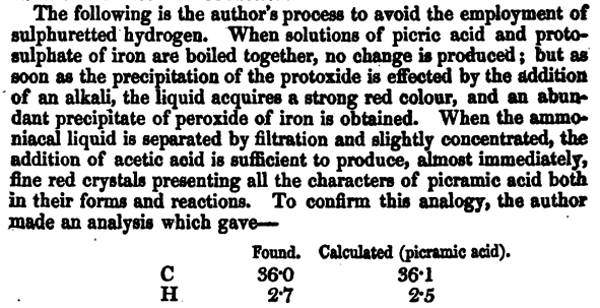
[Edited on 30-1-2014 by Hennig Brand]


Quote: Originally posted by Hennig Brand  |
 Or even better a sprinkler system
that was spraying sodium hydroxide solution (ouch!) Shouldn't make jokes, but I couldn't resist.
Or even better a sprinkler system
that was spraying sodium hydroxide solution (ouch!) Shouldn't make jokes, but I couldn't resist.
Quote: Originally posted by Rosco Bodine  |

Quote: Originally posted by Rosco Bodine  |
 And maybe my math is not so good sometimes. I shall continue to scratch my
head and think on this some more. But there are possible also interactions with manganous and ferrous salt used concurrently with sulfide, and
variants that suggest quantitative yields are possible with the ferrous salt. The reference I posted regarding the formation of basic ferrous salts I
think provides information which may be useful ultimately in a strategy to utilize the ferrous salt as a regenerable reducing agent, possibly
regenerated even by sugar. Avoiding the sulfide entirely even though it is efficient is desirable since it seems to be a "nasty" synthesis leaving
some impurity even in those procedures where a high yield is produced. A cleaner and more pure product that could still be easily synthesized is what
motivates examination of the alternative methods.
And maybe my math is not so good sometimes. I shall continue to scratch my
head and think on this some more. But there are possible also interactions with manganous and ferrous salt used concurrently with sulfide, and
variants that suggest quantitative yields are possible with the ferrous salt. The reference I posted regarding the formation of basic ferrous salts I
think provides information which may be useful ultimately in a strategy to utilize the ferrous salt as a regenerable reducing agent, possibly
regenerated even by sugar. Avoiding the sulfide entirely even though it is efficient is desirable since it seems to be a "nasty" synthesis leaving
some impurity even in those procedures where a high yield is produced. A cleaner and more pure product that could still be easily synthesized is what
motivates examination of the alternative methods. While on safari there,
probably good to bring a gun and matches.
While on safari there,
probably good to bring a gun and matches. 
Quote: Originally posted by Hennig Brand  |
 Call this thread a keeper.
Call this thread a keeper.
Quote: Originally posted by Hennig Brand  |




 I wasn't kidding when I said earlier that sulfur chemistry of this sort is a safari into the tall grass.
I wasn't kidding when I said earlier that sulfur chemistry of this sort is a safari into the tall grass. Quote: Originally posted by Rosco Bodine  |

 The book is Wrrrrr....wrrrr...WRONG!
The book is Wrrrrr....wrrrr...WRONG!  But your experiment is
right.
But your experiment is
right.


| Quote: |